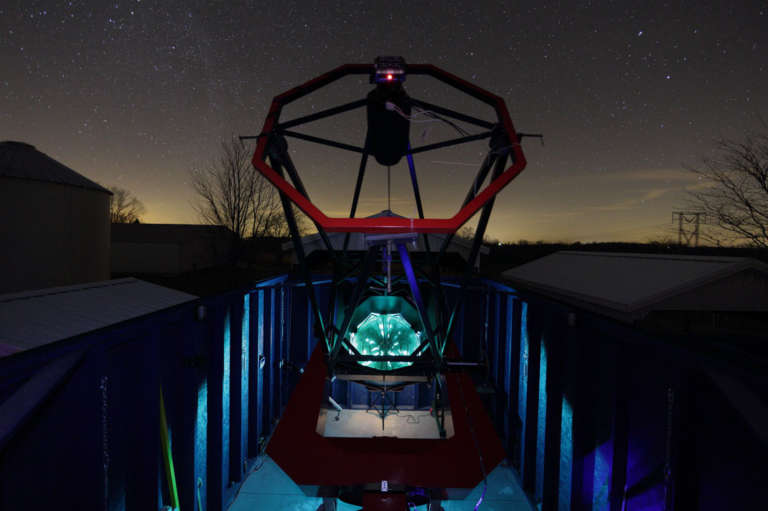Bruce Betts • Jan 30, 2015
Camera now measuring even fainter Near-Earth Objects
This is part of a series of updates direct from our Shoemaker NEO Grant winners showing their recent progress in defending the Earth from asteroids, in part using grant money from The Planetary Society. The Shoemaker NEO Grant winners, mostly very talented amateurs with amazing telescopic facilities, do some combination of finding, tracking, and/or characterizing near-Earth objects (NEOs).
This update is from four time Shoemaker NEO Grant winner Bob Holmes of the Astronomical Research Institute in Illinois, USA. Bob has earned more Shoemaker NEO Grants than anyone else and is one of the global leaders in astrometric (position) follow-up measurements.

His 2009 Shoemaker NEO Grant supported the purchase of a CCD camera for a 0.6-meter telescope. As Bob describes below, that camera is now being used on a new 1.3-meter telescope and imaging fainter NEOs:
Since February 6, 2006 the Astronomical Research Institute has made a total of 83,343 NEO measures. In the first 11 months of 2014 the Institute has provided the Minor Planet Center with 12,771 NEO measures using a 0.61-m, 0.76-m, 0.81-m and 1.3-m telescopes. Since the beginning of the year H21 has made 377 NEO observations fainter than unfiltered magnitude 22.0. A total of 35 NEOs have been measured this year fainter than unfiltered magnitude 23.0. All total the number of measures fainter than 22nd magnitude for 2014 is more than 1,000. As a part of our program, we typically dedicate at least one telescope each night to the follow-up of newly discovered NEOCP objects. On nights where observatories in the southwest are not operational due to weather, as many as 3 of the 4 telescopes will be used to track down as many NEOCP objects as possible.
In August 2014 we took an SBIG STL-1001E CCD camera off the 0.61-m telescope that was provided by a 2009 Planetary Society Gene Shoemaker grant. That camera was placed on the newly operational 1.3-m telescope that is dedicated to 100% follow-up of faint NEOs. In an attempt to evaluate the limiting magnitude, a series of co-added exposures equaling 90 minutes allowed us to obtain 3 measures of NEO 2010 SV3 at unfiltered magnitude 24.2. A second night confirmed the observations and the measures were then sent to the MPC as the faintest NEO measured to date at ARI.
ARI also provides opportunities to education and public outreach which currently involves 400 schools per year in 42 countries worldwide.
Help The Planetary Society support the hunt for near-Earth asteroids:
Support our core enterprises
Your support powers our mission to explore worlds, find life, and defend Earth. You make all the difference when you make a gift. Give today!
Donate

 Explore Worlds
Explore Worlds Find Life
Find Life Defend Earth
Defend Earth

